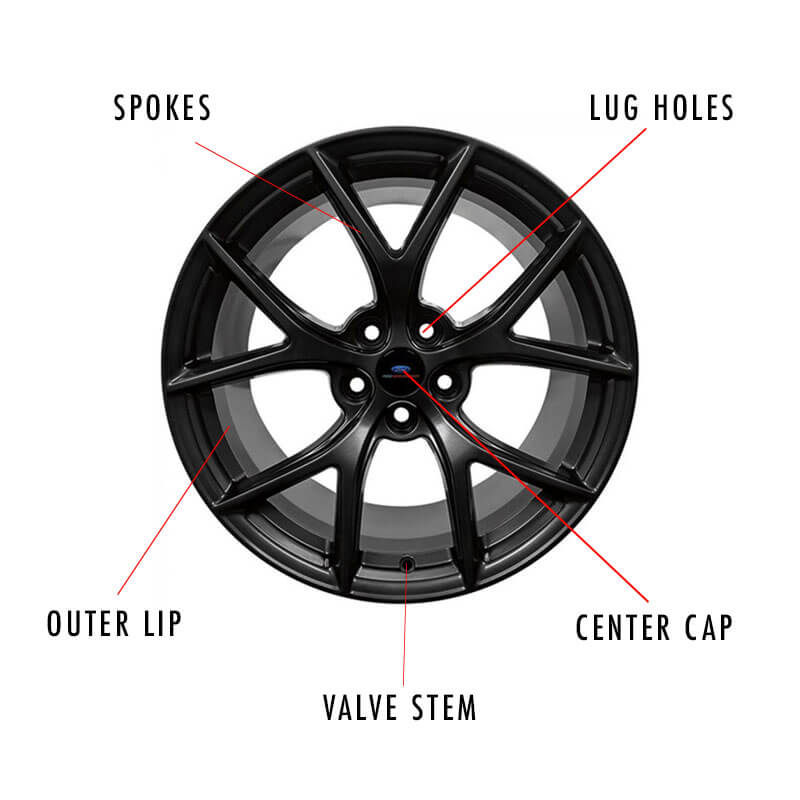Buying a new set of wheels for your car can be as much of an investment as you choose to make it. Brand new wheels can run from about $50 each to tens of thousands per wheel. Let’s take a closer look at choosing the type you need and the costs.
Steel wheels are the cheapest and most durable wheel option on the market. They generally run from about $50 each and are great for standing up to winter conditions, and particularly for heavy or hard-working vehicles.
Because steel wheels are so much heavier than alloys in the same sizes, they can put additional strain on your car or truck’s suspension. This can make acceleration more difficult and change your center of gravity, which ultimately can affect handling. During the winter though, all that extra weight can mean extra traction when you need it most on icy roads.
Steel wheels are not aesthetically the greatest, but if you’re looking for function over form, steel wheels might be just what you need. Consider this: police departments run steel wheels on their fleets of cars, they’re cheap to run through with heavy use, and durable enough to handle running over curbs regularly.
Alloy wheels generally cost more (over $500 for a full set), but they save in the long run on fuel economy alone. Thanks to being lighter weight versus steel, they’ll give you better fuel economy, especially during city driving.
Unfortunately, alloy wheels can bend and crack more easily, but that’s a worthwhile trade off when you consider gas mileage, handling and better acceleration. They feature nicer designs that add both style and function when you’re modifying your vehicle.
Cast Versus Forged Wheels
There are two primary ways to manufacture wheels – casting and forging. So what’s the difference?
Cast wheels are made by pouring molten aluminum into a mold that’s shaped like the wheel. Once it cools, it’s removed from the mold, and finishing touches are made. It can be trimmed, cleaned up and drilled out for mounting. The process is quick, which makes for less expensive production and a less expensive wheel for the buyer.
Cast wheels are more porous because of the curing process, so they’re more susceptible to cracks and other structural issues when they’re put up to extreme use. For normal driving conditions, that porosity isn’t something to worry about.
If you have the budget to spring for a little more, you can look into forged wheels. Forged wheels start as a solid block of billet aluminum. This is shaped into the wheel form and pressurized for added strength before it’s machined out into the final wheel design. Forged wheels are significantly lighter and stronger than cast wheels, and the look can’t be matched with cast wheels. If you have a serious race car, they’re well worth the investment. For most people, it’s just a matter of aesthetics.
Carbon fiber & more
There are other, way more exotic options on the market, but they just don’t make sense for most people. Materials like carbon fiber are available (and even come factory on certain cars – like the Mustang GT350 and Koenigseggs), but they’re a very expensive upgrade thanks to being handmade. Plus they’re not really meant to withstand the conditions of day-to-day driving.
1 piece vs. 2 piece (vs. 3 piece)
Because of the way they’re made, all cast wheels are one-piece wheels. Forged wheels have more flexibility because of their inherent strength, and are available in one or more pieces.
Two-piece wheels are generally made of the centerpiece with the spokes, and then the rim. They can be made up of cast aluminum, billet, or fully forged center section that’s either welded or bolted to the rim barrel.
Three-piece wheels are less common, but they’re made of a centerpiece and two separate rim halves. Most three-piece wheels are custom built and solve very particular fitment issues. They work well on high-end sport cars, and those with dramatically staggered wheel offsets. Manufacturers can also go this route to help them offer a wider range of wheel widths with minimal investment. In the end, 30-40 bolts are used to hold the pieces of the wheel together, and then a sealant is applied to ensure that the wheel is airtight.
Two and three piece wheels allow for more creative designs using different colors and materials. They can also allow for cost-effective repair in the event of damage, since individual pieces can be repaired or replaced without replacing the entire wheel.

